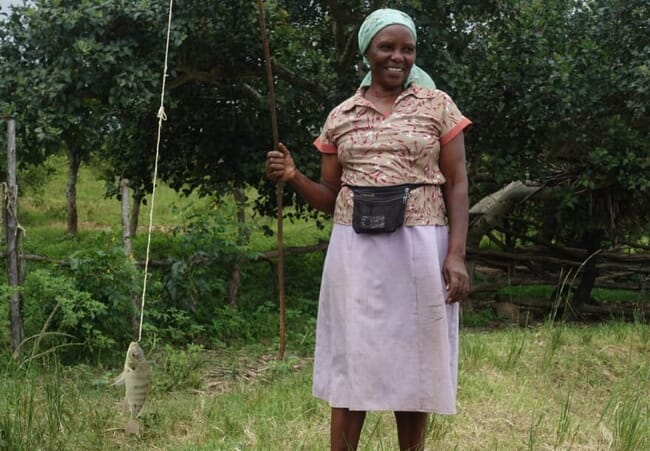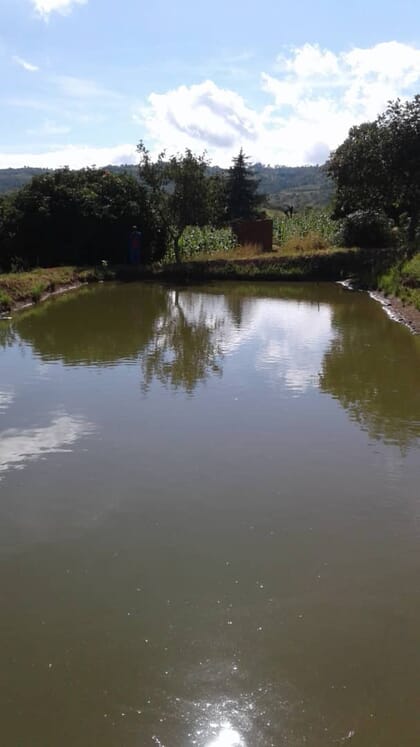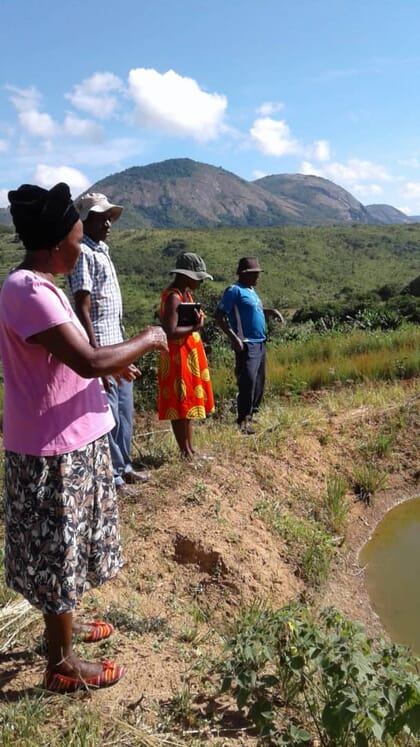After ditching her failing sugar bean growing venture Egerine Maifa appeared to have struck gold after tilapia farming in 2017.

However, rising fish feed prices at the end of 2018 began to threaten her success. When she started farming tilapia, in rural Mutasa district in Zimbabwe’s eastern Manicaland Province, the country was using a range of foreign currencies dominated by the US dollar, as well as a local nominal currency called the “bond,” whose value was pegged on par with the greenback.
At that stage she was buying a 25kg bag of feed for US$18. She could afford it and her business was doing well. However, beginning October last year, she faced the prospect of her aquaculture venture failing just like her sugar bean enterprise. In that month the government separated US$ and “bond” bank balances, resulting in the latter depreciating against the former. Prices of just about everything started soaring.
The trend worsened in June this year after the government abolished the use of foreign currencies for local transactions. A 25kg bag of feed now costs $350 Zimbabwe dollars, which is equivalent to US$23 using the official interbank rate of roughly US$1 to Z$15. Apart from the effective increase in the feed price in US dollar terms, Maifa now also has to contend with increasing costs of transporting the feed to Mutasa from Mutare, a town some 50 km from her home where the fish feed is sold.
“There was a glimmer of hope when I started this venture with a single pond in October 2016 and harvested in March 2017. However, those gains are being eroded by the high cost of feed,” she said.
Her venture grew fast as she now has three ponds at her homestead, two of which are stocked with tilapia. She is preparing to stock 2,000 fingerlings into the third pond this month.

© Daisy Jeremani
Fortunately for her and her 200 fellow fish farmers in Mutasa, a London-headquartered charity, Practical Action, came along in July with an idea to assist them in coming up with more affordable, alternative fish feeds.
Practical Action was attracted to the district not only by the high demand for fish there and surrounding areas but also by the availability of natural water sources and favourable temperatures.
The charity has been promoting fish farming in Mutasa since 2015 under its livelihoods and food securing programme, working with about 200 farmers. The project has had an additional thrust since July.
Through workshops on alternatives to regular fish feed that they have done with Practical Action, Maifa and her colleagues have managed to improve feed availability and drastically cut costs associated with conventional feed without necessarily compromising the quality of the fish.
She is growing the river tamarind (Leucaena leucocephala) whose leaves and pods she feeds to her fish. She also grows sweet potato, taking its leaves to feed her fish. Chicken droppings have become handy for her too as she ties them in a sack and place in the pond. They promote the growth of algae which fish feed on.
The tamarind’s leaves contain about 22.7 percent crude protein and the species can thrive on degraded soils which are low in nutrients. Multiple studies have shown that fish fed on leucaena meal perform well in terms of weight gain, specific growth rate and feed conversion ratio.
Practical Action Mutasa district project manager Gift Dzitiro told a local daily in July: “We are looking for local entrepreneurs who are willing to partner us in this local feed formulation. This will be more affordable because it uses locally available resources. We have started training farmers on using cheaper food alternatives like aquaponics, whereby they put vegetable seedlings in the ponds, which then serve as food for the fish. We have also trained them on how to grow and use red worms and other horticultural crops like lettuce to feed their fish.”
The national spokesperson for Practical Action, Innocent Katsande, said that due to the rise in feed prices, some farmers had scaled back their commercial fish farming projects to subsistence level, while others have completely quit.
“As part of commercialisation, Practical Action therefore decided to take up feed formulation initiatives,” he said.

© Daisy Jeremani
“The feed formulation concept seeks to address issues of availability and affordability of the necessary raw materials for local feed formulation through the use of chopping, grinding, mixing and pelleting machines.”
The initiative is still at an early stage and needs to overcome challenges including the cost of acquiring the feed formulation equipment, but the NGO and farmers are confident it will reduce input costs by up to 80 percent. Training manuals have been shared with the hope of training farmers with effective demand for the concept.
In addition, Practical Action is experimenting with new and unique agro-ecological approaches to fish farming. These include vermiculture, under which redworms are bred for feeding the fish on one hand, but also to produce valuable vermicompost for fertilising terrestrial crops.
Gordon Mashuwa, another farmer in Mutasa, said this innovative way of fish farming has transformed his operations and reduced his feed costs. He has created vermicomposts using 20 litre plastic containers.
“The composts have been working wonders for us. We are benefiting on many fronts,” he said, referring to the production of redworms for both fish feed and fertiliser.
Through an agro-ecological consultant Practical Action has trained a total of 95 fish farmers – 48 male and 47 female – and eight farmers are now actively producing red worms, of whom four are using aquaponic systems.
Mashuwa is one of those trained in aquaponics, a combination of aquaculture and hydroponics which enables him to save space and engage in two kinds of farming at once. He uses his fish ponds as a nursery for some of his plants.
Godfrey Maboreke, an agriculture extension officer in Mutasa, said the high cost of fish feed has led farmers to explore the use of other alternative ingredients. Some are using pig dung tied in sacks as they do with chicken droppings, and pounded pearl millet which they broadcast in their ponds.
However, he warned farmers to be wary of their water becoming too full of algae as this can deplete oxygen levels in the pond, leading to possible fish deaths.
“Farmers should use the ‘elbow method’. This means to say when you place your hand in water to elbow level you should be able to clearly see your palm,” he says.


